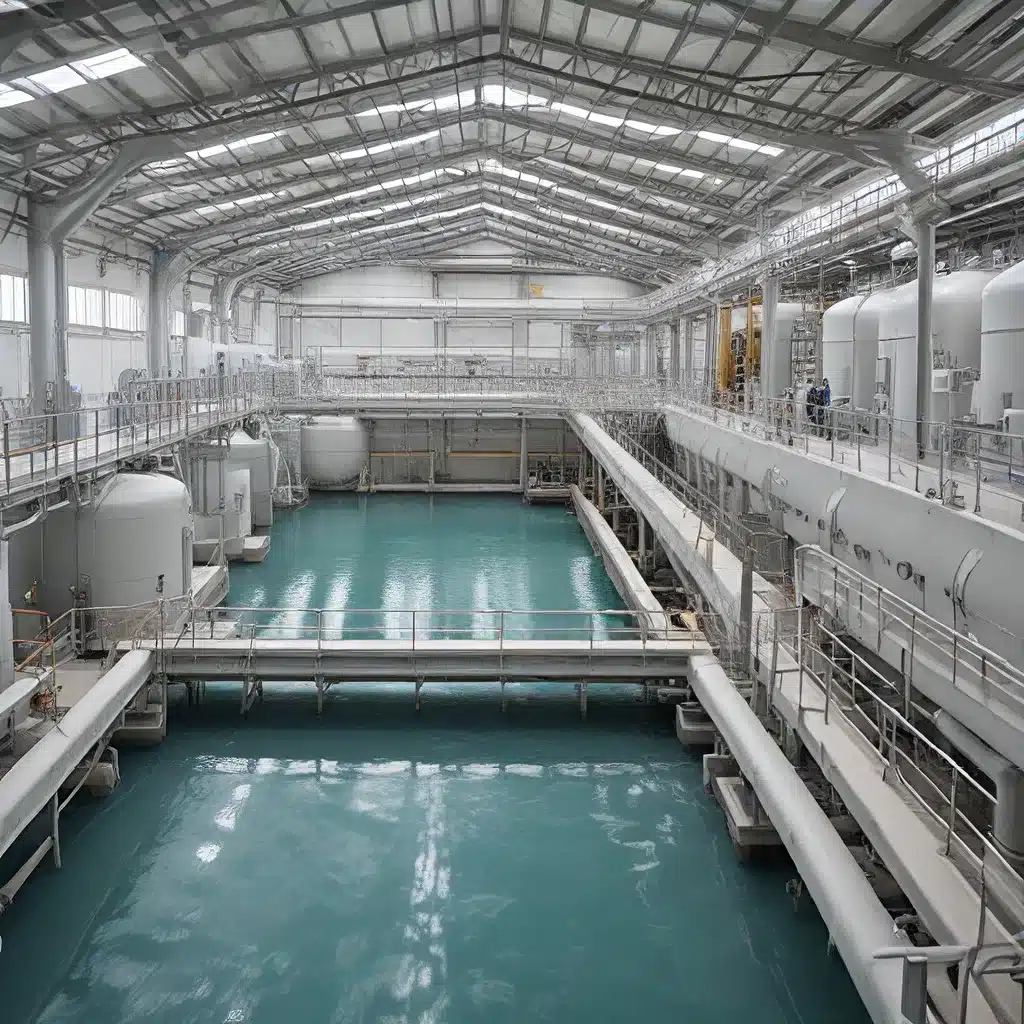
Driving Innovation in Water Treatment Safety: Lessons from Industry Leaders
As someone who has spent the better part of my career immersed in the world of water treatment, I can attest to the constant push for innovation and the unyielding pursuit of safety. It’s a delicate balance, really – pushing the boundaries of what’s possible while ensuring our processes and practices protect the health and wellbeing of both our workers and the communities we serve.
But what does that look like in practice? How do industry leaders stay ahead of the curve, driving meaningful change in an arena that can often feel slow-moving and resistant to transformation? Allow me to take you on a journey, drawing insights from the frontlines of water treatment innovation and safety.
The Importance of Cultivating a Culture of Safety
It all starts with mindset. At the heart of any successful water treatment operation, you’ll find a deep-rooted commitment to safety. This isn’t just a box to check off or a set of protocols to begrudgingly follow – it’s a way of being that permeates every aspect of the business.
I was reminded of this a few years ago when I had the opportunity to tour a state-of-the-art water treatment facility in the Southwest. As I stepped through the doors, the difference was palpable. Safety wasn’t an afterthought; it was woven into the very fabric of the organization. From the signage and training materials to the way employees carried themselves, there was an unmistakable sense of vigilance and ownership when it came to maintaining a safe working environment.
The School of Energy at San Juan College has been at the forefront of this movement, offering a range of programs and certifications designed to equip the next generation of water treatment professionals with the knowledge and skills needed to thrive in this dynamic field. Their state-of-the-art training facility provides hands-on experience in everything from instrumentation and controls to industrial safety, ensuring that graduates are prepared to hit the ground running in an industry that demands the utmost in diligence and attention to detail.
Embracing Emerging Technologies for Safer Operations
Of course, cultivating a culture of safety is only half the battle. Water treatment leaders are also constantly on the lookout for the latest technological innovations that can enhance safety, efficiency, and sustainability.
Take, for example, the rise of advanced monitoring and control systems. H2O Innovation, a leading provider of water treatment solutions, has been at the forefront of this movement, developing cutting-edge systems that allow operators to remotely monitor and adjust critical parameters in real-time. By taking the human element out of certain high-risk tasks, these technologies significantly reduce the potential for accidents and errors, creating a safer working environment for all.
But the innovation doesn’t stop there. Water treatment facilities are also embracing the power of data analytics, using sophisticated algorithms to identify potential safety and efficiency issues before they even arise. Through predictive maintenance and proactive problem-solving, these tools are helping industry leaders stay one step ahead of the curve, minimizing downtime and ensuring that their operations remain safe and reliable.
Fostering Diversity and Collaboration for Transformative Ideas
In an industry that is often seen as resistant to change, the most innovative water treatment leaders are those who recognize the power of diverse perspectives and cross-pollination of ideas. By cultivating an inclusive and collaborative environment, they’re able to harness the collective creativity and problem-solving abilities of their teams, leading to transformative solutions that push the boundaries of what’s possible.
Harvard Business Review has highlighted the profound impact that diversity can have on innovation, noting that teams with a range of backgrounds and experiences are better equipped to identify and tackle complex challenges. In the water treatment industry, this could mean bringing together engineers, chemists, safety experts, and frontline workers to tackle a thorny issue, each contributing their unique insights and expertise.
This collaborative approach is especially crucial when it comes to ensuring the safety and wellbeing of workers. By involving employees at all levels of the organization in the decision-making process, industry leaders can tap into a wealth of on-the-ground knowledge and firsthand experience, leading to more effective and impactful safety protocols.
Embracing the Challenges, Driving Towards a Safer Future
As I reflect on my journey in the water treatment industry, I’m struck by the incredible progress that has been made in terms of safety and innovation. But I also know that there is still much work to be done. The challenges are ever-evolving, and the stakes are high – both for our workers and the communities we serve.
Yet, I remain optimistic. By continuing to push the boundaries of what’s possible, embracing new technologies, and fostering a culture of collaboration and inclusion, the water treatment industry is poised to lead the way in creating a safer, more sustainable future. It’s a tall order, to be sure, but with the caliber of leaders and innovators I’ve had the privilege of witnessing firsthand, I have no doubt that the industry is up to the task.
So, let’s continue to navigate these choppy waters together, learning from one another, and driving the kind of meaningful change that will safeguard our most precious resource for generations to come. After all, the future of our water treatment systems – and the communities they serve – depends on it.


